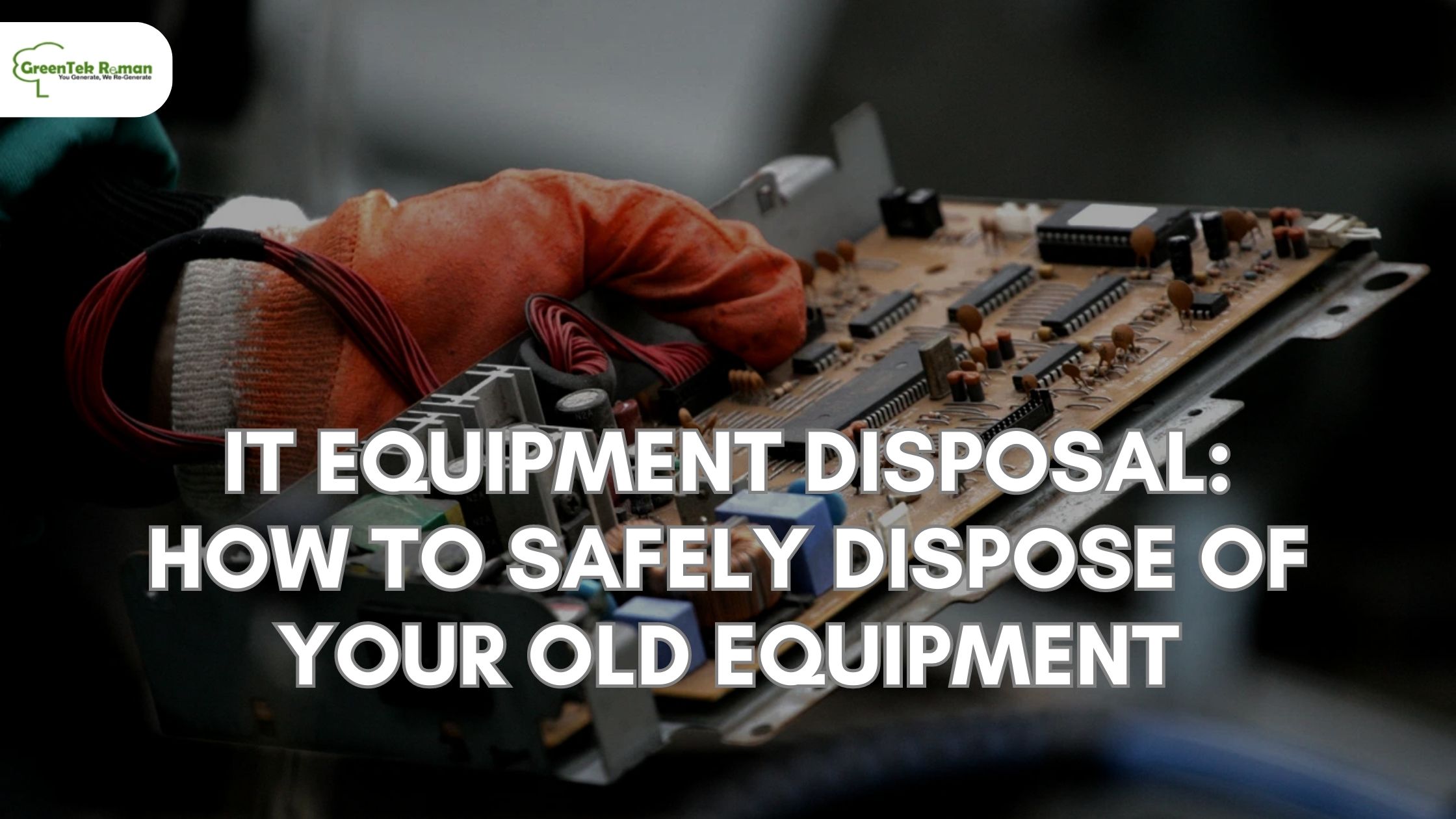IT Equipment Disposal: How to Safely Dispose of Your Old Equipment
As technology continues to advance at a rapid pace, many of us find ourselves replacing our old IT equipment with newer and more efficient models. Whether it’s outdated laptops, printers, or smartphones, it’s essential to handle the disposal of these devices responsibly. According to the Synergy Research Group, the need for secure disposal procedures has never been more critical with the surge in global spending on data center hardware and software, which reached a staggering $152 billion in 2019. Improper asset disposition can pose significant environmental risks and compromise data security. The ever-increasing cycle of upgrading equipment and acquiring new infrastructure has brought the challenges of IT equipment disposal to the forefront. In this guide, we will walk you through the process of safely and responsibly disposing of your old IT equipment.
An Overview of IT Equipment Disposal
IT equipment disposal, also known as IT Asset Disposition (ITAD), is the responsible process of removing outdated or unwanted digital and electronic equipment. It encompasses the entire lifecycle management of hardware assets, from procurement to decommissioning and disposal. When enterprises invest in new IT infrastructure, it is crucial to have a coherent strategy for handling existing systems and equipment. IT equipment disposal involves following best practices to ensure data security and environmentally friendly practices. This includes rendering storage devices and media inoperable, preventing data leaks through data recovery, and properly treating physical waste materials.
Organisations have various options for disposing of IT equipment. Refurbishing or reselling can extend the life of equipment or provide monetary returns. Recycling or discarding eliminates the on-site storage burden but requires compliance with environmental regulations and legal obligations. Creating an IT equipment disposal policy formalises these considerations.
Organisations can safeguard sensitive information, comply with regulations, and contribute to environmental sustainability by adhering to proper IT equipment disposal practices. Taking help from ITAD service providers can reduce the burden on organisations.
Steps for Safe Asset Disposition
Assessing Your IT Equipment:
Before disposing of your IT equipment:
- Assess its condition and functionality.
- Conduct a physical inspection, checking for visible damage or defects such as broken screens or malfunctioning components.
- Test the devices’ functionality, ensuring proper booting, software responsiveness, and network connectivity.
- Take an inventory of the data stored on each device and determine if any data needs to be securely removed.
Secure Data Removal:
Data security is paramount in asset disposition. Back up important files and documents as a precautionary measure. Consider using data-wiping software or performing a factory reset to erase all device data. Ensure the data removal process is thorough, leaving no traces of sensitive information. For added security, physically destroy storage devices that cannot be wiped clean.
Environmentally Responsible Disposal:
Dispose of your old IT equipment in an environmentally responsible manner. Explore options for refurbishing, reselling, recycling, or donating the equipment. Choose a reputable (IT Asset Disposition) ITAD company specialising in secure and eco-friendly disposal. ITAD companies ensure proper recycling and adherence to environmental regulations.
Compliance with Regulations:
Familiarise yourself with data protection and privacy regulations applicable in your jurisdiction or industry. Ensure your disposal process complies with these regulations to avoid legal consequences. Implement best practices and industry standards for data security.
Documentation and Record-Keeping:
Maintain proper documentation of your IT equipment disposal process. Keep records of the devices disposed of, data removal methods used, and any certificates of destruction obtained. This documentation proves your responsible disposal practices and can be valuable for compliance audits.
The Role of IT Asset Disposition Companies
Data Security experience: ITAD service providers have the required experience to securely remove data from IT equipment using cutting-edge methods and software tools.
Compliance with Regulations: To reduce the danger of non-compliance and potential legal repercussions, ITAD company ensures that the disposal procedure complies with data protection and privacy rules.
Secure Handling and Transportation: ITAD firms have systems in place for the safe collection, delivery, and storage of IT equipment, reducing the risk of loss, theft, or damage.
Environmentally Responsible Disposal: To ensure the proper disposal of IT equipment, ITAD firms put an emphasis on environmentally responsible practices and collaborate with approved recycling facilities and waste management facilities.
Asset remarketing and value recovery: They evaluate equipment condition and pinpoint assets that can be repaired and resold, enabling businesses to recoup some of their investment and reduce electronic waste.
Documentation and Certificates of Destruction: ITAD service providers offer paperwork and certifications of destruction as evidence of compliance, data erasure, and environmentally responsible practices, indicating an organisation’s dedication to safe and sustainable IT asset management.
Final Thoughts
Regarding IT equipment disposal, choosing a comprehensive service that prioritises security, sustainability, and value maximisation is crucial.It’s important to note that disposal doesn’t have to mean wastage. ITAD Companies like GreenTek Reman offer an excellent alternative by specialising in refurbishing and recycling old IT equipment. By choosing GreenTek Reman, you not only ensure safe asset disposition but also contribute to promoting a circular economy.


